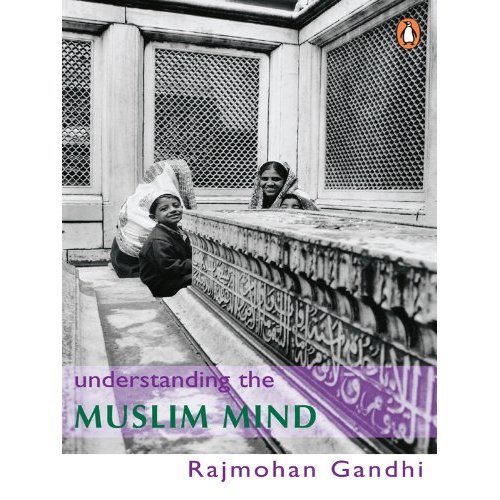Books
Understanding the Muslim Mind – Rajmohan Gandhi – Reviewed by Sukant Khurana

Rajmohan, M.K. Ganndhi’s grandson, takes us through lives of eight prominent Muslims of Indian subcontinent as a means of tour de understanding through partition of Hindustan into “officially secular” India and two fringing Islamic states, namely Pakistan and Bangladesh. It tries to illustrate qaum’s collective psyche during colonial rule by taking examples of lives of its leaders, but not of a common man of different regions, with all his cultural and socio-economic diversity. He has chosen a good spectrum of leaders representing different interests, ideologies and reactions to historical turmoil around them. He has done an in-depth, almost dispassionate analysis of the political, ideological and personal differences of those who decided to represent the interests of different communities. Author has stopped a bit short of documenting changing fears, aspirations of common person.
Later events in the history of subcontinent have been kept out of scope of his present study. Given that the emphasis has been on partition, ideally a more comprehensive understanding of both soft and hard Hindutava-vadis and greater analysis of Gandhi’s abandonment of qaum after Khilafat would have made this study pivotal for understanding the partition.
Nonetheless, it is an amazing resource, for anyone wanting to understand the partition of Madre-vatan or Indian Motherland.
He has brought forward interesting shift in some leader’s attitude from being Champions of Hindu-Muslim unity, from being leaders of Hindustani qaum to leaders of only the Muslim qaum. How very devout Muslims like Iqbal and Azad react very differently to fears of transfer of power from hands of Gora Sahibs to largely Hindu majority. One asks for Pakistan fearing oppression by Hindus, while other invokes Quranic injunctions, telling Muslims that it is there religious duty to be Hindustani. For Azad, whose forefathers served Mughal Hindustan, who had some Arab ancestry, Hindustani and Muslim are synonymous. On the other hand, Iqbal who’s Kashmiri Brahmin Grandfather converted to Islam, in his later years, could not envisage any land other than homogenous Muslim land, with dynamism of Europe and Spirituality of east. Once Congress stalwart, Mohammad Ali Jinnah, who asked for allegiance to India, as precondition to allegiance to League, would make Congress its first enemy and Raj a very insignificant second. Did the fear of discrimination, due to equal franchise in largely Hindu India, displacement from emerging top slot in Congress, by a man returning from South Africa, who dressed like coolie and lived on thin air made Quaid turn to “his qaum“? Serving with spine of steel, he would settle for nothing less than a complete Pakistan with Kashmir, undivided Punjab, undivided Bengal and Hindu majority Assam, yet he offered peace and coexistence with Congress as late as 1937. Congress with arrogance and indifference, unrivaled even by the Raj, failed every time after Khilafat to represent the qaum. Whether it was Gandhi’s turning back to qaum or power hungry Nehru team’s hurry for the office and unwillingness to share any power or British divide and rule, which sowed the seeds of partition, is explored at length in this book.
It does a good job in exploring whether the seeds of partition were sowed or whether it was inevitability and when did it became inevitability, if ever. It touches on Gandhi giving Jennah the credibility to Quaid to really be Quaid-e-Azam, but fails to explore it fully. Author explores, whether it was British who divided and ruled or as Mohammad Ali said in London in 1930 “We divide and they rule”. The author has been fairly critical of failure of Gandhi to come up with Hindustani idioms and push Hindu idioms like “Rama Rajya” and prayers like “Raghupati Raghav Raja Ram“. He has also been wise to point out lack of effort on part of qaum to appreciate common Indian motifs and idioms, exemplified by qaum’s criticism of usage of Sanskrit words by Zakir Hussain’s addresses earlier as Governor of Bihar and later as President of India.
It is a good analysis of saddest and bloodiest chapters of subcontinents history, which left unrelenting Jinnah to settle for much smaller Pakistan than he wanted and Congress with largely Hindu India, a legacy of partition, which continues to this day, a divided nuclear-armed subcontinent with mutual distrust and antipathy. Understanding past, which Rajmohan has done a good job at, is necessary for us Hindustanis to move forward as one unified people. To me, it leaves with unanswered and unexplored question of finding ways to make the two circles of Islam and Hindustaniyat concentric in my lifetime.









